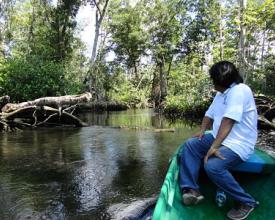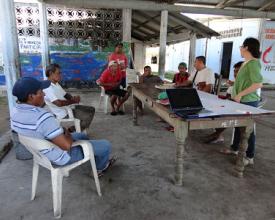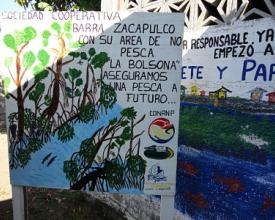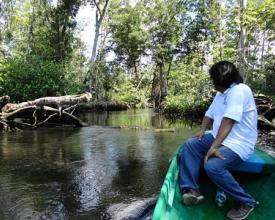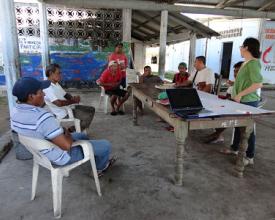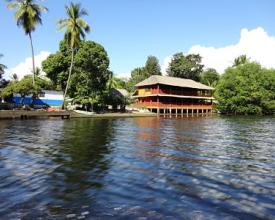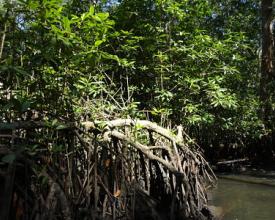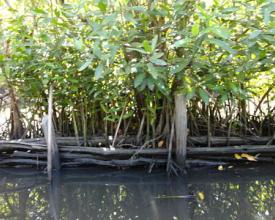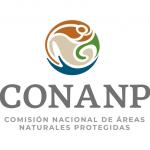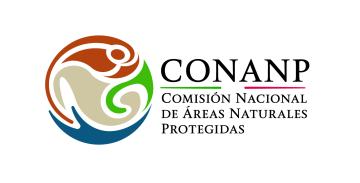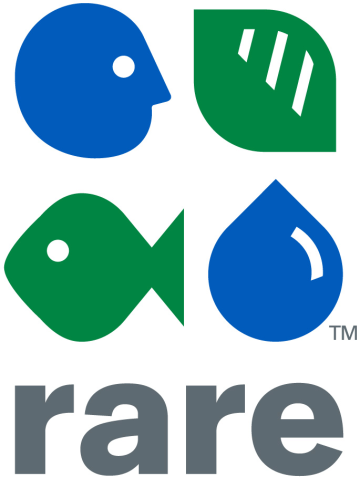"Pesca Responsable": responding to climate change through sustainable responsible fishing and mangrove rehabilitation
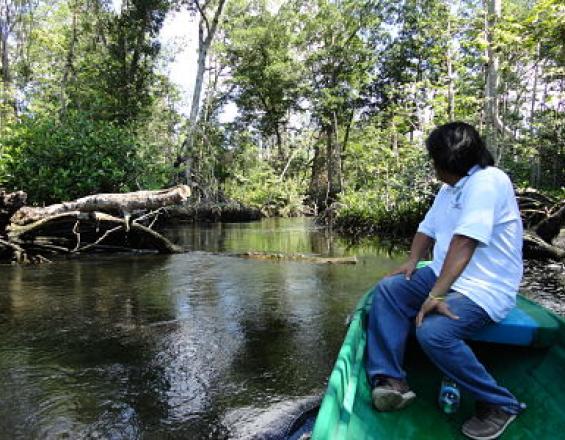
By consolidating a participatory management strategy based on the strengthening of fishing communities within the Biosphere Reserve “La Encrucijada”, CONANP has managed to promote a high level of community self-organization. Fishing cooperatives now are able to negotiate, regulate and enforce, amongst themselves, their own agreed best practices for sustainable, responsible fishing and mangrove rehabilitation, in order to reduce climate risks such as storm events and prevent coastal erosion.
Context
Challenges addressed
1) Environmental:
a) Meteorological events are, from one side, reducing the habitat for fish reproduction because of sedimentation when there are floods; and, from the other side, long period of drought are affecting the salinity balance of water bodies and mangrove systems.
b) The erosion of the upper and the middle part of the basin has increased the sediment depostion en lagoons, estuaries and mangroves ecosystems, causing the loss of depth. On the other hand, the pollution of water bodies is related to the use of agrochemical products for agricultural activities and from industrial discharges.
2) Socio-economic: to improve the level of:
a) community self-organization;
b) direct access to markets, without the costly use of mediators;
c) communitarian participation on sustainable practices;
d) incomes.
Location
Process
Summary of the process
Building block I “Creating a sense of belonging to local ecosystems” has been a foundation for the rest of the building blocks in this solution, whether it is about creating a willing workforce for the arduous work of rehabilitating channels and flows in the mangrove systems (building block IV), supporting the creation of improved levels of self-organization needed to define and self-regulate policies for practical sustainable fishing (building block II), or providing the confidence necessary to embark on additional economic activities related to the sustainable use of mangrove systems, which can improve adaptive capacity to the cascading risks affecting the reserve (building block III). The other building blocks all also nurture the sense of identity: working in physically rehabilitating the mangroves and seeing the benefits from doing so; as will the confidence gained from successfully sustainably managing and making use of the resources within the ecosystem to maintain livelihoods.
Building Blocks
Creating a sense of belonging to local ecosystems
CONANP has acknowledged that “without peoples’ interest, you won't get anywhere” in terms of promoting sustainable community use of local ecosystems. It is therefore not only important to raise awareness within local communities of the relevant connection between mangrove ecosystems maintenance, fisheries and local livelihoods, it is of vital importance to create a sense of identity and belonging of those communities to those ecosystems. Identity can be developed by raising the awareness of the benefits of sustainable management of the resources directly in terms of benefits to local livelihoods. However, identity can also be further strengthened by encouraging the self-organized engagement of all members of the community in not only making use of different parts of the ecosystem to sustain livelihoods, but also in engaging in its nurture and rehabilitation. The rest of the building blocks in this solution all aid this further development of identity of the local communities as a part of their local ecosystems.
Enabling factors
- The good functioning of the other building blocks in this solution;
- a network of NGOs who can effectively work with communities in promoting a sense of belonging and identity;
- the ecosystem is still healthy enough to be a potential source of community pride, and to return quick results (the mangroves are some of the best on the American Pacific coastline);
- a sense of entrepreneurship in the local communities.
Lesson learned
The major lesson learned here was that, whilst initially the work with the fishermen was going well, the qualitative leap in progress and generation of synergies within the communities for raising the levels of commitment and effort for a transformation in attitudes and practices regarding the mangrove ecosystems in which they lived and its sustainable use, was the inclusion of their wives and children in the process.
Increasing community self-organization
Levels of community self-organization have been improved within fishing communities by strengthening their various capacities needed to define and self-regulate policies on sustainable fishing. This was done by:
-training on: fishing catch limits and productivity possibilities, how resources and fishing are interlinked;
- In the field, mentoring by NGOs on how fishermen can make group decisions and effectively plan the zonification of ecosystems into conservation and fishing/productive areas;
- Involvement of the fishermen’s wives and children in awareness-raising activities, leading to a strengthening of the learning process within families.
This has led to social cohesion within the zone, allowing the fishing cooperatives to negotiate and regulate amongst themselves to agree and enforce best practices for sustainable fishing; and increasing their capacity to find direct markets for their products, without the need for intermediaries. Being able to self-organize to the point of coming up with and implementing their own sustainable fishing solutions, made the communities owners of those solutions, which means the latter will be more likely to be maintained into the future.
Enabling factors
- A network of NGOs experienced enough to be able to provide mentoring in the field to the fishermen;
- excellent teaching materials and methods appropriate to the communities;
- commitment of wives and children to the whole process;
- existing levels of organization upon which to build (e.g. fishing cooperatives);
- a shared sense of identity and belonging between the fishing cooperatives;
- an existing sense of pride and entrepreneurship in the local communities.
Lesson learned
- It is of vital importance to make use of existing cooperatives to generate, lead and manage new techniques and regulations in the existing productive activities.
- People are more willing to get involved and practice self-organized initiatives for sustainable management when they perceive quick improvements in their productive activities related to the nurturing and rehabilitation of mangroves.
- Therefore, monitoring any benefits derived from initiatives is important.
- Inclusion of all family members in the process of developing self-organization skills and capacitation.
- Good management of the NGO network necessary for capacity development is essential.
- Enough resources should be available to continue working on the nurturing of the fishermen’s organizational capabilities up to the point where they are self-organizing.
Creating adaptive capacity as a buffer against risk
CONANP is encouraging the fisherwives to diversify their families’ economic activities into:
- the production and sale of niche mangrove products, such as mangrove flower honey;
- the setting up of ecotourism activities, such as running tours inside the mangroves, bird watching trips.
CONANP is supporting this diversification in the following ways:
- Providing capacity development to these cooperatives in the area of touristic business development and administration
- Providing support for finding markets for new products.
The benefit of CONANP’s approach is to provide the fishing communities with an adaptive capacity buffer in terms of multiple income sources, to reduce economic risks when fisheries are affected by tropical storms or when CONANP is working to solve the problem of river contamination due to upriver communities.The risk reduction approach also increases the link between the fishing communities and the mangrove ecosystems in terms of identity and belonging, by opening up more opportunities for its sustainable use.
Enabling factors
- An existing focus point of attraction for tourists, to make sure there is a flow of tourists and that costs in attracting tourism are kept viable;
- committed wives and supportive husbands;
- existing structures of social cohesion, leadership and organization (such as fishing cooperatives) to be able to support new entreprenuerial activities.
Lesson learned
It is important, if local people are going to adopt new commercial activities, to be patient and consistent in advice-giving. Fear of a loss of income in the short term, will make people more risk-adverse to adoption. Before any investment in new activities, communities have to have evidence that these new activities are practicable and profitable.
It is vital to ensure local people have the capacity to market and attract customers to new products, whether honey or tourist services.
There is tourist infrastructure already in the reserve which is under-used. This is both an indication of the challenge of moving into ecotourism, and of an opportunity: the new touristic activities could be linked to existing ones for the mutual benefit of both.
It has to be recognised that capacities for managing businesses is likely to be low in marginalised communities. It is essential that training includes continuous support for locals on how to price services, and manage businesses.
Rehabilitating channels and hydrological flows in mangroves
In order for problems of salinity to be solved in perturbed mangrove ecosystems, as well as for fish production and migration to be optimized, it is vital that channels within the mangrove systems are properly cleared and maintained, even if this means cutting some trees. Clear and well-maintained channels permit the hydrological flows between salt- and freshwater sources in a mangrove to find a natural balance, favouring biodiversity. They also permit the movement of fish to and from the ecosystem in rhythm to those flows, as well as facilitating the natural expansion of the mangroves via greater seed dispersal.
Enabling factors
- A committed local community workforce which is convinced of the benefits of rehabilitating the mangroves.
- Trained government agencies which know the best ways to rehabilitate mangroves.
- A sustainable programme of payments for temporary work by which the local community can be additionally rewarded for their service to ecosystem maintenance, thus providing additional adaptive economic capacity (see building block III).
Lesson learned
- The keys to mangrove rehabilitation are channel restoration and maintenance, leading to improved hydrological network flows.
- Governmental programmes for temporary work payments and subsidies must not be relied upon, only, for generating local support for maintaining the mangrove ecosystems, since the money available for such programmes might not be guaranteed in the medium to long run.
- Rehabilitation and maintenance of mangroves is hard and grueling work – conviction and evidence of the benefits it brings to livelihoods is needed to sustain a community’s commitment to such a task.
Impacts
After two years of working along and of strenghtening CONANP's processes, and with the participation of the fishing cooperatives of 8 local communities (with a total population of 3029 habitants), 591 fishermen have beneficieted directly. CONANP has worked to improve their capacities on:
-Improved, sustainable fishing practices, and increased catches, which are possible because of protection and conservation actions on the mangroves systems, which have been substantially improved. The rehabilitation of 84 km of canals, estuaries and lagoons has improved the hydraulic circulation within the mangroves leading to the improvement of water quality, increased ecosystem productivity, greater mangrove seed dispersal, and more diversity of species entering the mangroves.
-Increased incomes for eight fishing communities, resulting from increased production and sale of fishery and artisanal products, as well as from payments for ecosystem services which the cooperatives carry out aimed at the rehabilitation of the mangrove.
-Improved systems of governance within fishing communities which have strengthened social cohesion within the zone, as well as providing the confidence needed to initiate changes requiring high levels of organization, such as the development of direct forms of commercialization for their local products, without involving costly intermediaries.
Beneficiaries
-591 fishermen of 8 fishery communities: restoration and rehabilitation of 84 km of channels in the mangroves system, and from the maintenance of species habitat
-Their wives: new economic activities-aquaculture, handcraft, environmental education
Sustainable Development Goals
Story
La Encrucijada Biosphere Reserve (area: 167,310 ha) contains two large coastal lagoon systems including some of the best preserved mangrove forests on the American Pacific. Nestled between ocean and mountains, the reserve is home to fishing, ranching and farming communities. Due to the mountain topography, the latter two activities on the northern slopes of the reserve can rapidly affect the coastal mangrove systems to the south via connected river systems. Climate change and an increase in the frequency of tropical storms results in a cascade of risks: storms damage the mangrove systems and negatively affect the dynamics of fish production and migration, altering the delicate hydrological balance between salt- and freshwater. Increased storm flooding increases sediment flows downriver into the channels and water bodies of the mangrove ecosystems. Flooding carries contamination from ranching and farming activities into them as well. All of the above have the potential to endanger the sustainability of the mangroves and local fish stocks, and thus weaken coastal livelihoods. In response, CONANP has consolidated a community-driven participatory management strategy based on strengthening the sense of identity and belonging of the communities as a central part of the biosphere reserve. Starting with fishing communities, this sense of belonging was promoted by involving the fishermen in the rehabilitation and maintenance of mangrove ecosystems, and hydrological flows. Both contribute to the improvement of local fisheries. Additionally, women and children have also been involved in activities related to the benefits of the sustainable use of local resources for their livelihoods. Community self-organization has been actively strengthened, as well. This has resulted in: i) fishing cooperatives negotiating and regulating amongst themselves to agree and enforce best practices for sustainable fishing, and ii) increasing their capacity to find direct markets for their products, without the need for intermediaries. Community belief in, and ownership of, the solution to sustaining their environment and their livelihoods has been key. To provide adaptive capacity to the fishing communities, in terms of secondary income sources, CONANP has also supported fisherwives to diversify economic activities towards mangrove-related i) ecotourism services, such as bird-watching tours, and ii) niche product production, such as mangrove flower honey.

